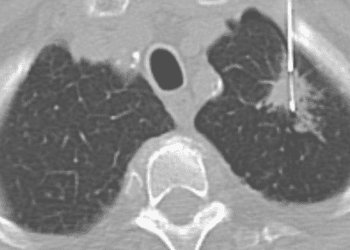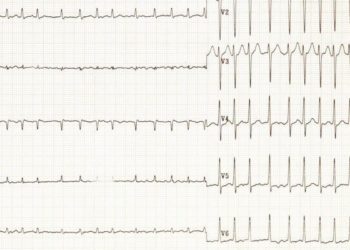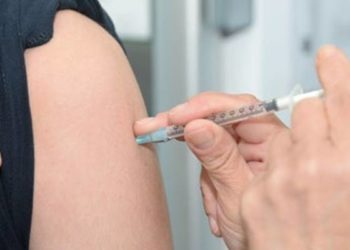Levonorgestrel IUD superior to medical therapy in the non-surgical treatment of menorrhagia
Jan 9th – Adherence was also substantially higher in women with the levonorgestrel IUD.
 [tabs tab1=”2MM Rundown” tab2= “2MM Full Report” tab3=”About the Authors”]
[tabs tab1=”2MM Rundown” tab2= “2MM Full Report” tab3=”About the Authors”]
[tab]
Image: PD
1. In women with non-structural heavy menstrual bleeding, levonorgestrel intra-uterine device (IUD) was superior to medical therapy in affecting symptom reduction.
2. Two years after treatment initiation, adherence was substantially higher in women with the levonorgestrel IUD.
In women presenting with menorrhagia without structural cause, the levonorgestrel IUD affected greater reduction in the impact of symptoms and greater adherence at 2 years than medical therapy. Health workers should note that study findings do not inform surgical management of menorrhagia or the appropriateness of surgical versus medical management of menorrhagia.
Patient and physician knowledge of treatment group, along with the use of a qualitative, self-reported outcome measure introduced the opportunity for bias. However, because the clinical definition of menorrhagia is subjective and patient-centered, this may be of little concern as qualitative self-reporting of symptoms may prove the most appropriate outcome measure.
Click to read the study in the current issue of NEJM
[/tab]
[tab]
Image: PD
1. In women with non-structural heavy menstrual bleeding, levonorgestrel intra-uterine device (IUD) was superior to medical therapy in affecting symptom reduction.
2. Two years after treatment initiation, adherence was substantially higher in women with the levonorgestrel IUD.
Primer: Menorrhagia, also known as abnormal uterine bleeding with heavy menstrual bleeding (AUB/HMB), is referred to as menstruation at regular intervals but with patient-perceived excessive flow (1, 2). The causes of AUB/MHB are best described by the classification system known by the acronym PALM-COEIN. PALM designates structural causes: polyps, adenomyosis, leiomyomas, malignancy, while COEIN represents nonstructural causes: coagulopathy, ovulatory dysfunction, endometrial, iatrogenic, nonclassified (2). In the workup of menorrhagia, it is especially important to rule out time-sensitive diagnoses such as endometrial hyperplasia, endometrial or cervical cancer and spontaneous abortion (miscarriage).
Treatment for menorrhagia (AUB/HMB) depends on cause. Structural causes are often treated with surgery, as in the case of fibroids (hysterectomy vs. myomectomy) and polyps (polypectomy), whereas nonstructural causes may be managed surgically (hysterectomy, endometrial ablation, uterine artery embolization) or medically (NSAIDs, hormonal therapy: progestins or combined estrogen-progesterone OCPs), tranexamic acid, an anti-fibrinolytic) (2). Though created for contraception, the levonorgestrel IUD can also be used to treat AUB (3). However, most existing research on AUB treatment compares surgical and medical interventions (5-6).
In the present work, researchers compared symptom relief from non-surgical treatments for menorrhagia (AUB/HMB) by randomizing patients to receive treatment with levonorgestrel IUD or standard medical therapy (NSAIDs, OCPs, tranexamic acid).
Background reading:
- Up-to-Date: Chronic Menorrhagia
- ACOG Practice Bulletin 182: Diagnosis of abnormal uterine bleeding in reproductive-age women
- ACOG Practice Bulletin: LARC’s
- Levonorgestrel IUD: safety, efficacy and patient acceptability
- Cost-effectiveness analysis of hysterectomy, endometrial ablation and levonorgestrel IUD
- Randomized Trial: Levonorgestrel IUD vs. Hysterectomy with 5-year follow-up
This [randomized controlled] trial: randomly allocated 571 women with heavy menstrual bleeding to treatment with levonorgestrel IUD (n=285) or to medical therapy (NSAIDs, combined estrogen-progresterone OCP’s or progesterone alone; n=286). The effect of menorrhagia on daily life was self-assessed at 6, 12 and 24 months using a validated questionnaire, the Menorrhagia Multi-Attribute Scale (MMAS), which ranges from 0 to 100.
After 6 months, MMAS scores improved from baseline (corresponding to a reduction in the impact of symptoms) in both groups but were more impressive in the levonorgestrel IUD group (32.7 point increase, p<0.001) as compared to the medical therapy group (21.4 point increase, p<0.001). Across the 2-year study period, between-groups analysis showed larger improvements in MMAS scores in the IUD group (13.4 point mean between-groups difference; p<0.001). At the end of 2 years, adherence was greater in the IUD group as compared to the medical therapy group (64% and 38%, respectively, p<0.001).
In sum: In women presenting with menorrhagia (AMB/HMB) without structural cause, the levonorgestrel IUD affected greater reduction in the impact of symptoms and greater adherence at 2 years than medical therapy. Health workers should note that study findings do not inform surgical management of menorrhagia or the appropriateness of surgical versus medical management of menorrhagia.
Patient and physician knowledge of treatment group, along with the use of a qualitative, self-reported outcome measure introduced the opportunity for bias. However, because the clinical definition of menorrhagia is subjective and patient-centered, this may be of little concern as qualitative self-reporting of symptoms may prove the most appropriate outcome measure.
Click to read the study in the current issue of NEJM
By [LH]
© 2012 2minutemedicine.com. All rights reserved. No works may be reproduced without written consent from 2minutemedicine.com. Disclaimer: We present factual information directly from peer reviewed medical journals. No post should be construed as medical advice and is not intended as such by the authors or by 2minutemedicine.com. PLEASE SEE A HEALTHCARE PROVIDER IN YOUR AREA IF YOU SEEK MEDICAL ADVICE OF ANY SORT. Content is produced in accordance with fair use copyrights solely and strictly for the purpose of teaching, news and criticism. No benefit, monetary or otherwise, is realized by any participants or the owner of this domain.
[/tab]
[tab]
 Leah Hawkins: Leah is a 5th year M.D./MPH candidate at Harvard Medical School.
Leah Hawkins: Leah is a 5th year M.D./MPH candidate at Harvard Medical School.
[/tab]
[/tabs]




